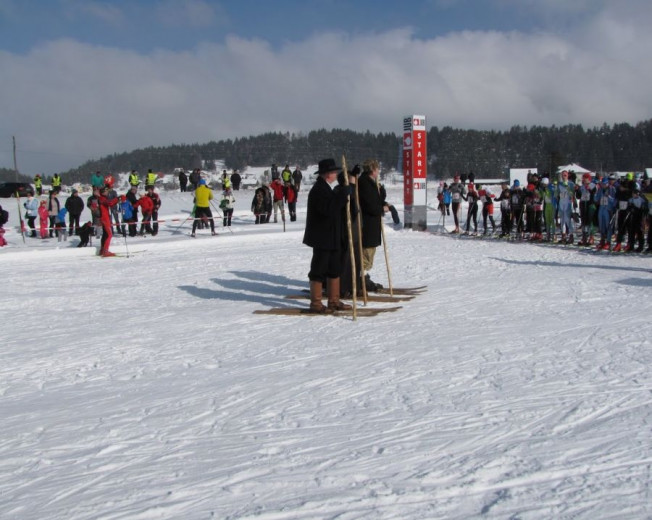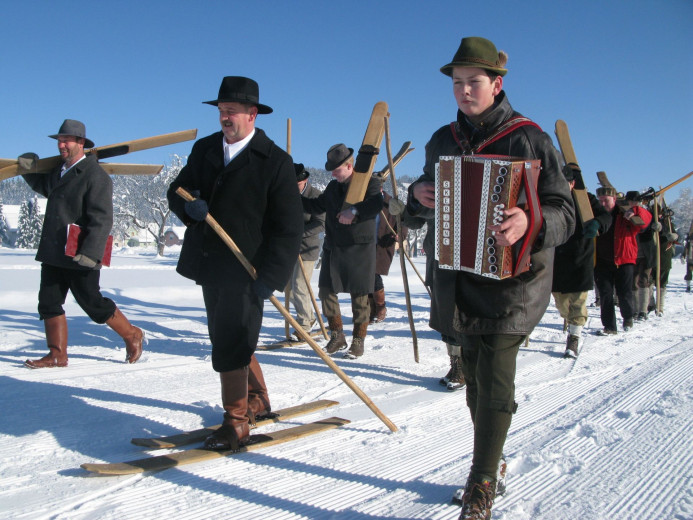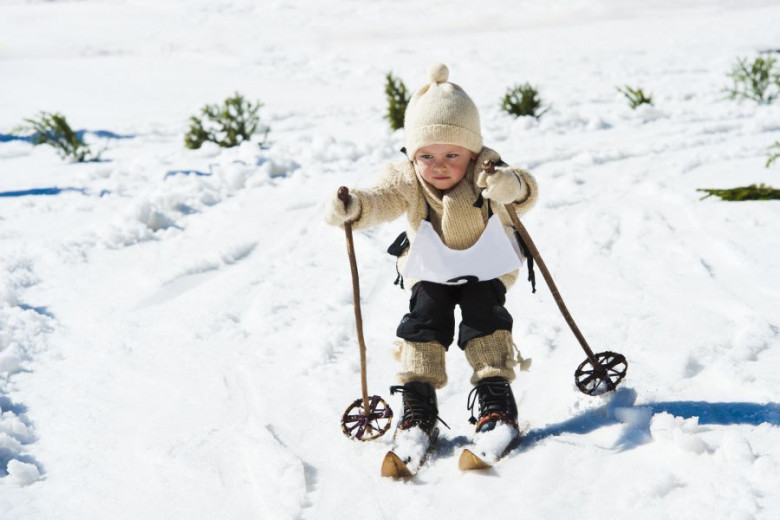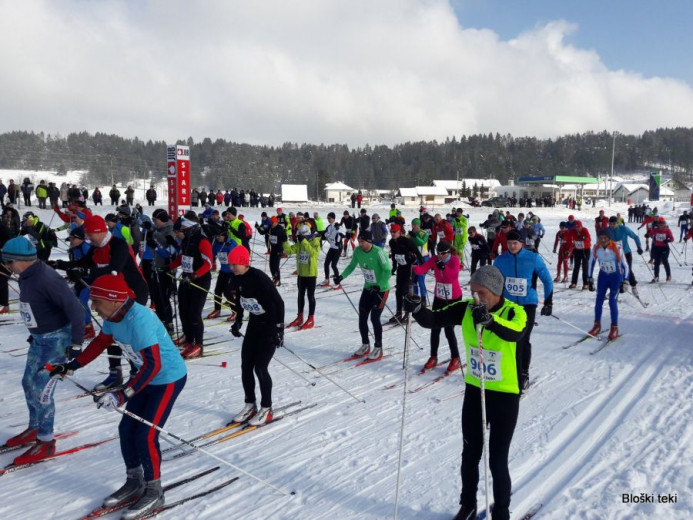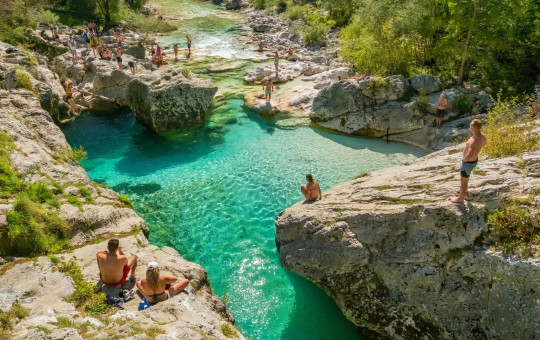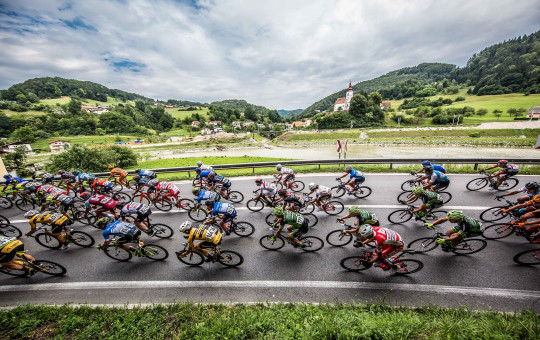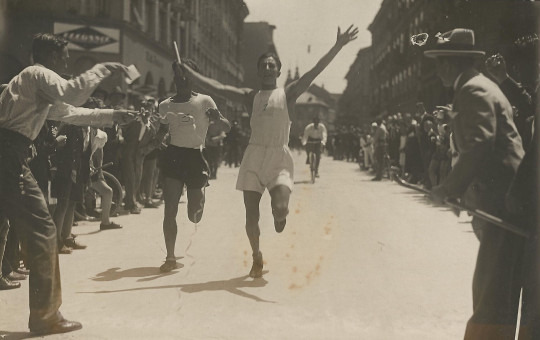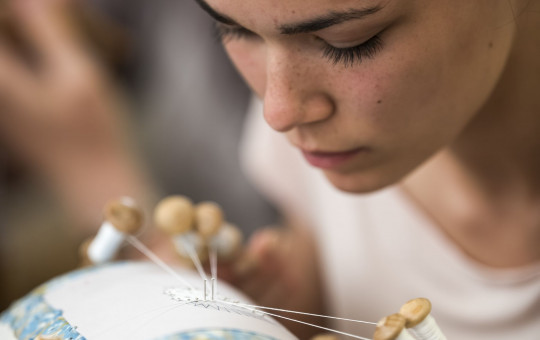Can you imagine going to work on skis tomorrow? On an ancient pair exhibited in a museum? Two wooden planks curved upwards in the front and a leather strap in the middle?
Unimaginable, isn't it? Especially in light of all the comforts of today and the fact that there is less and less snow in Slovenia.The winters used to be harsher. People living in areas where snow was abundant had to find manageable ways to move around.
Farmers at the Bloke Plateau were indeed very innovative and resourceful when they accidentally "invented" skiing in around the year 800 and they certainly did not intend it to be a sport activity.
The Bloke Plateau is located at the very edge of the Notranjska region between Cerknica Field and the valleys of Lož and Ribnica. The people of Bloke were the only ones in Central Europe to use wooden skis for practical reasons. They devised skis to get around, run errands, pay visits, transport goods, bring babies to church for baptism, go to mass and escort the deceased to the cemetery.
A brief glance at its history
The skier of Bloke, a distinctive ethnographic figure of Slovenia and the Bloke Plateau, embodies a tradition carefully preserved by the Bloke Municipality.
He is featured in their coat of arms that depicts a big man dressed in black, wearing black boots and a black hat, with a golden pole in his right hand and a pair of golden skis on his feet.
The people of Bloke used to make such wooden skis at home. They liked using old, already bent beech wood, because it required no additional curving.
Records show that other varieties of wood were also occasionally used, such as birch – for its greasiness and smoothness – or maple, pear, elm, ash and cherry.
The dimensions of the skis vary. Measurements mentioned in oral tradition differ from those taken from the museum exhibits – a length of 1.50 metres with an approximate width of 15 centimetres and thickness of up to 2 centimetres. The length of the front curved section was about 20 per cent of the entire length of the ski. Skiers used an up to two metre-long thick pole to help them negotiate snow covered terrain.
Unique skiing technique
"The citizens of the Bloke Plateau are very proud of Bloke skiing, it is part of our identity. On its account, Slovenians are the only nation in Europe with indigenous term for skis; all other nations derive their respective terms from the Norwegian word ski. The Bloke Municipality has established the Bloke Skier Museum where visitors can see old skis and equipment, as well as take a tour on authentic Bloke skis. In 2005, the documentary White Circle of Life was made to depict the people of Bloke and our lives on skis – from birth to death. We have a saying in Bloke about our winter lasting nine months and the cold prevailing in the remaining three months.
Every few years, we organise a sports day for school children to experience skiing on Bloke skis, which everyone gets excited about.
We have set up a group of old-style Bloke skiers who participate in events across Slovenia to demonstrate the Bloke skiing technique on traditional skis dressed in historic clothing," said the Head of TIC Bloke, Matej Pakiž, about the significance of the Bloke skier.
To celebrate the Bloke skier and honour the skiing tradition, Bloke cross-country ski marathon has been organised by the Bloke Municipality since 1980. It is held on the first Sunday in February, snow conditions allowing.
So, February 2020 is an opportunity to see the Bloke skier live. If winter is not your favourite season, you are invited to visit Slovenia in spring. Bloke skis are exhibited at the Bloke Skier Museum and also at the Slovene Ethnographic Museum.
Date: 1. December 2024
Time to read: 2 min

